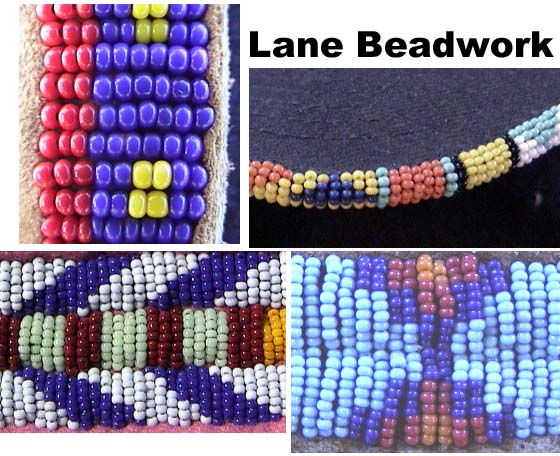AMERICAN INDIAN DESIGN DECORATION: BEADWORK
ROY COOK
Traditional designs are many times inspired by careful observation. Each
Tribe, band, community's designs are unique to each ones original geographical
region. Those places, sights, moments in time, filled each of our relations
with the desire to reflect and continue that felt beauty. Today, we each
have the opportunity to step onto those traditional trails and seek out
our own inspiration from a traditional cultural heritage. The waters,
mountains, wind and stars are still there. The optimum experience is many
times the most enriching on- many levels. This will often go beyond the
instruction by your favorite relative or tribal artist. If this traditional
path is at all possible, by all means respectfully make your interest
known.
This is a good time to mention three "friends" who need to be a part of
this activity: sincerity, dedication, and respect. Your work and success
will reflect how well your "friends" enjoy your playtime. Yes, I mean
Play in the purest, most wonderful sense of the word. Fun, joyful, happy,
satisfying feelings as you do beadwork. For many this will begin with
the first attempts, others need to try to master the basics with repeated
practice. As with many fond activities (sports, knitting) time is not
even in the ballpark when we are having fun. Time is only measured by
your feeling good about the activity and the success of the experience.
There is no "Clock time" when we are having fun.
LANE BEADWORK.
This decorative technique has been in use over two hundred years in many
regions of Indian country. Earlier times, quill work rows or lanes of
design were part of traditional tribal design and decorations. For many
years this style has been labeled, by the uninformed, as the "lazy stitch".
As you look at it and attempt the technique, you will soon agree there
is nothing "lazy about it". In appearance they do indeed look like lanes
or rows of beadwork.
PROJECT ONE.
We will bead a lane of sixteen sewn stitches of beads, seven beads wide.
This lane will consist of a traditional basic background, color: white,
light blue, red or green. These lanes will be applied to 3" squares of
felt as many times as necessary to gain confidence in the technique. We
will introduce three design elements: vertical line (stitch), horizontal
or 'running' line and the diagonal. (A, B, C) These three elements, with
slight variations, will produce a vast majority of designs. Good beading
!
